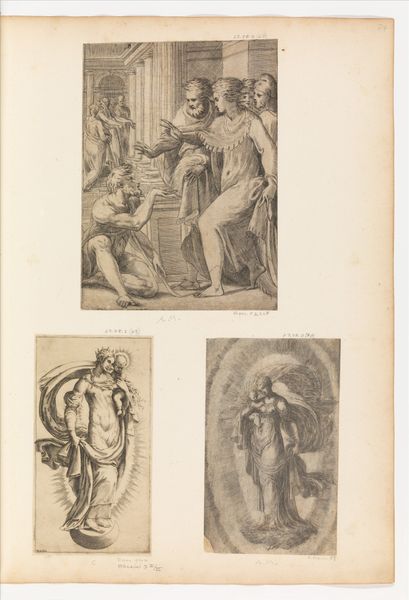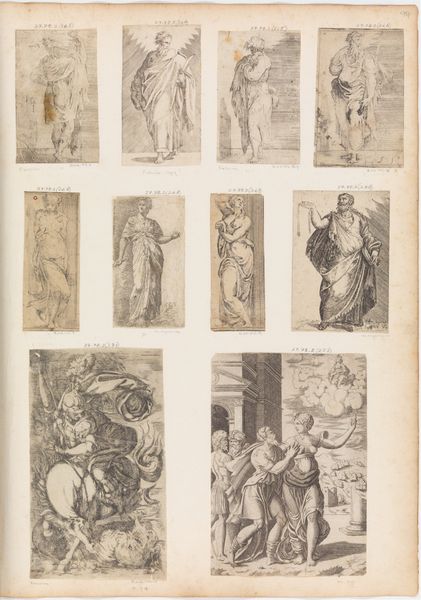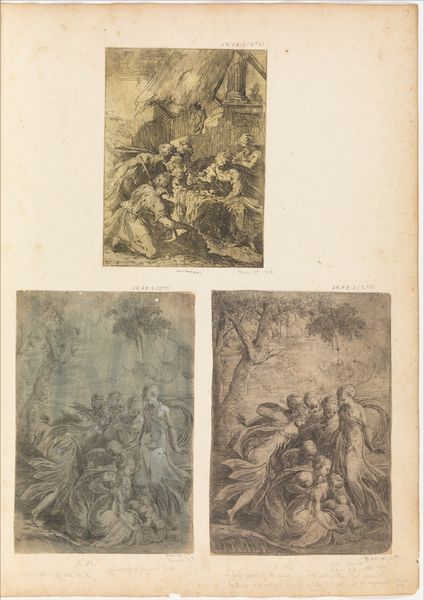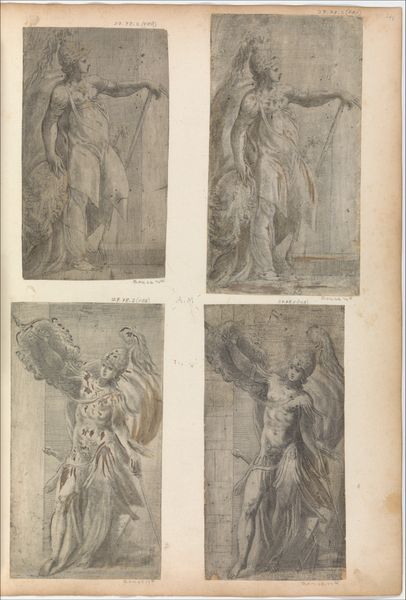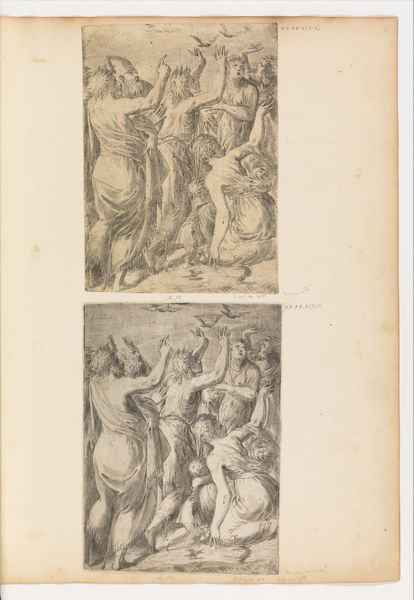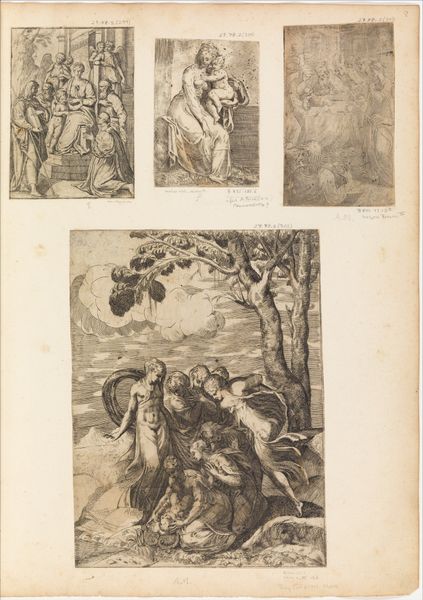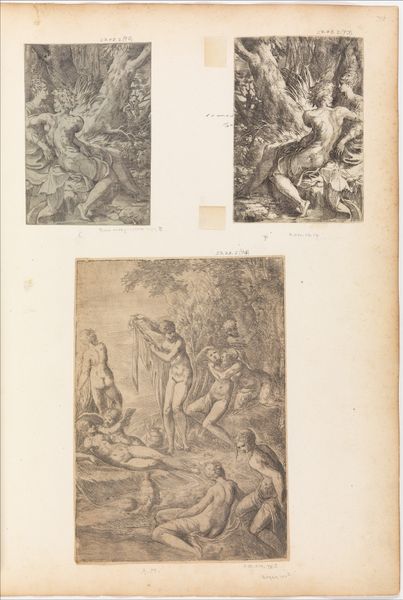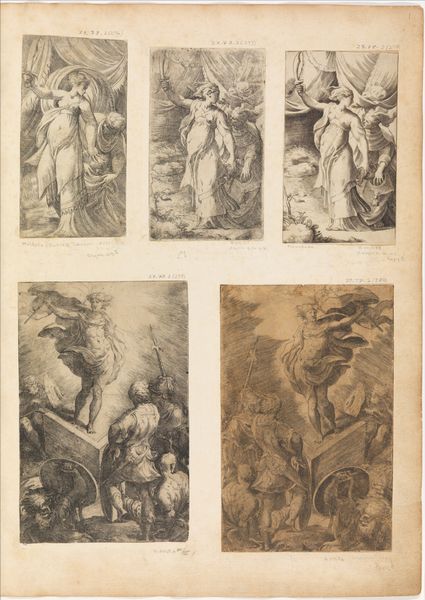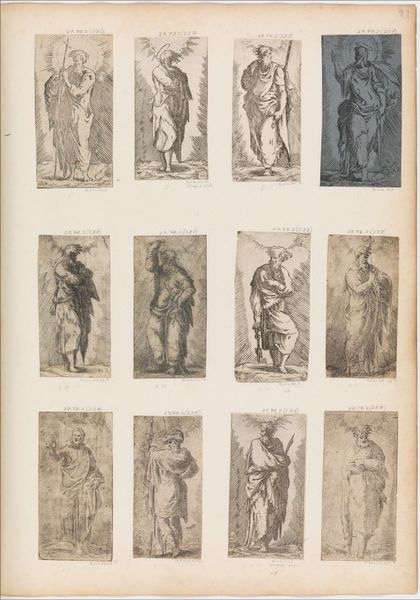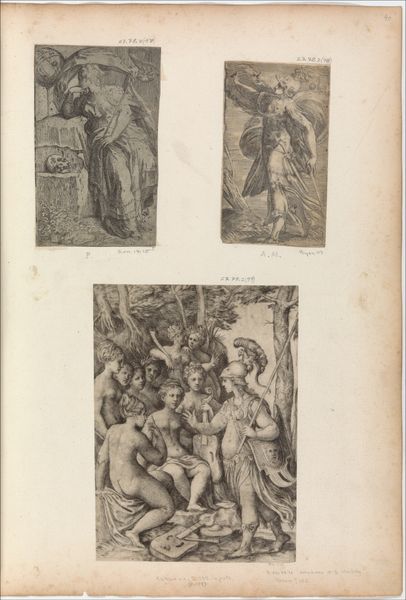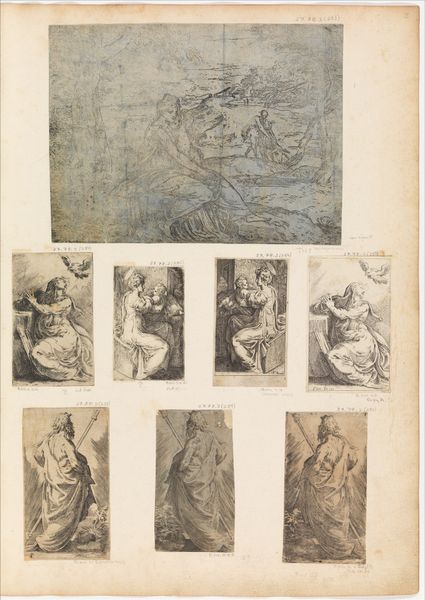
drawing, print, engraving
#
drawing
# print
#
mannerism
#
figuration
#
history-painting
#
italian-renaissance
#
nude
#
engraving
Copyright: Public Domain
Curator: This fascinating page, held in the collection of the Metropolitan Museum of Art, presents six separate engravings or prints depicting classical subjects, made by Andrea Schiavone in the 16th century. It's titled 'Apollo and Daphne,' yet it's so much more than that singular pursuit. Editor: It’s…busy. There's an energy to it, almost frantic, like glimpsing different stages of a dream, a mythological opera compressed onto a single sheet. The overall impression is a whirlwind of limbs and drapery rendered in incredibly delicate lines. Curator: Indeed. Schiavone's mannerist style really shines through here. The elongated figures, the dramatic poses... He was playing with classical themes but also pushing against the High Renaissance ideals of balance and harmony. It shows a network of power as well. Considering the prints were part of a bound collection, a *libro*, gives us some sense into the display of knowledge at the time. Editor: You know, that frantic energy, the contorted bodies—it speaks to the inner turmoil of those myths, the desperate chase, the unwanted transformation. Daphne’s terror is almost palpable, even in these small-scale engravings. But let’s think about it more deeply… Isn’t the display of power an artistic statement in itself? Do you think that his art reflects societal concerns during that period? Curator: I think so. Certainly, in the 16th century, these scenes of mythological narrative carry significant weight. Schiavone would likely be reflecting anxieties about societal change, class and religious conflict through these reinterpreted myths. Consider that printing had grown substantially during his lifetime, allowing Schiavone to sell his prints to private collectors to be shared widely. In this context, they certainly challenge contemporary issues through these prints, with some reserved erotic undertones. Editor: Erotic, yes! There is a simmering tension, almost violence to the way the bodies are rendered, wouldn't you say? He seems fascinated with the point of transformation itself. These are definitely for an educated and refined elite who relish those details and tensions. It’s dark but really makes you think about the human form when dealing with these kind of mythic tales! Curator: Precisely. These weren’t mass-produced images for the common person. They were for the collectors, the connoisseurs who could appreciate the intellectual and artistic layering at play here. Editor: Well, however chaotic it might appear at first glance, Schiavone definitely manages to stir up potent feelings with this crowded, intense vision of myth. And, let’s just say, it really sparks a long list of questions about artistic styles. Curator: I wholeheartedly agree. It's a fascinating piece for uncovering how 16th-century people saw not just art but the evolution and progression of society through history and the contemporary eye.
Comments
No comments
Be the first to comment and join the conversation on the ultimate creative platform.

